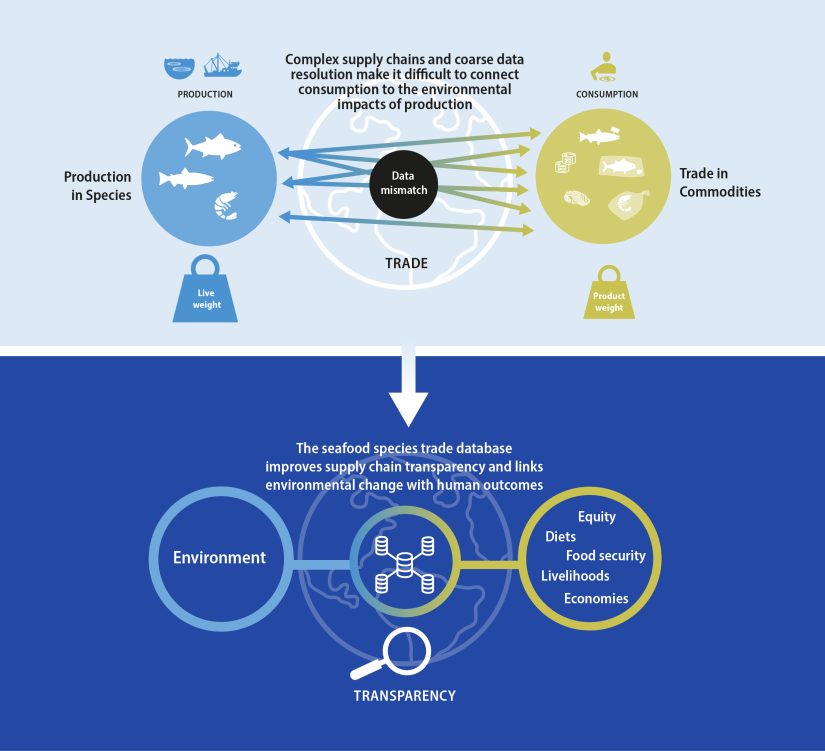The globalization of the aquatic food trade
In an increasingly globalized world, aquatic foods have followed the same trend. Seafood is one of the most highly traded foods in the world and is a critical resource for human nutrition, livelihoods, and revenue. But despite this globalization trend, researchers have revealed that the basic characteristics of aquatic food trade remain largely unknown.
In a new study, which presents results from a newly developed database called ARTIS (Aquatic Resource Trade in Species) on species trade for all farmed and wild aquatic foods spanning almost 25 years from 1996 to 2020, researchers have provided the first global estimates of seafood species and nutrient trade flows. The database consists of over 2400 species from 193 countries and over 35 million bilateral records. Published in September 2024 in Nature Communications, the study was led by Jessica Gephart from the University of Washington School of Aquatic and Fishery Sciences (SAFS), and the research team comprised eight institutions from across the globe.
Feeding people nutritious and sustainable diets, providing economic opportunities for communities, and generating revenue for a country, are just some of the reasons why aquatic food systems are an important resource. Trade of aquatic foods brings a range of benefits and risks for food security, resilience, and sustainability, but the knowledge gaps in trade presented a key problem the research team wanted to tackle.
One of the key issues identified was the way that trade data for aquatic foods is reported. Although the data is publicly available, there are big unknowns in what should be basic knowledge, such as what the main species consumed are, whether they are farmed or wild, and whether they are sourced from domestic or foreign sources. The ARTIS model tackled the root cause of the issue, namely that trade is reported in terms of products. This often includes multiple species, and any one species can go into multiple product forms. ARTIS overcomes this issue by tracing flows back to the estimated producing country, and estimating the species mix within traded products.
Why is information such as this important to know? Nearly 60 million tonnes of aquatic foods were exported in 2020, representing 11% of global aquaculture trade by value. Aquatic foods are also a key source of nutrition worldwide, with global consumption increasing by nearly 20% during the period covered by the study. By gaining deeper insight into aquatic food trade, researchers can provide more concrete data on associated risks to do with globalization, such as accelerating the nutrition transition to unhealthy diets, undermining domestic production, exposing local markets to international shocks, and degrading local environment to meet distant market demand.
As questions of sustainable diet grow in importance worldwide, having accurate trade data for aquatic foods is critical. There are different dimensions to consider when thinking about the sustainability of food. Terrestrial versus seafood. Wild caught versus farmed. Knowing where food comes from, what the emission footprint is, whether it was caught in a sustainably managed fishery, and other aspects involved in trade that ultimately lands it on a consumer’s plate, is vital information.
